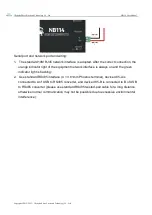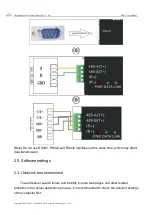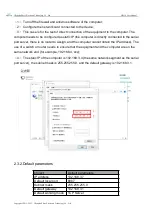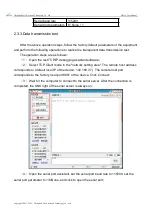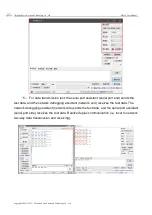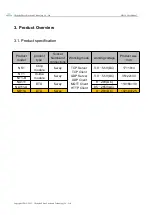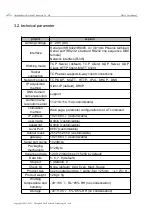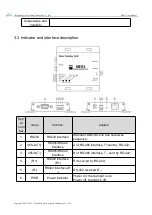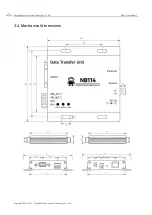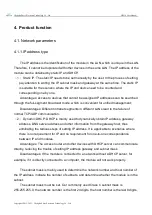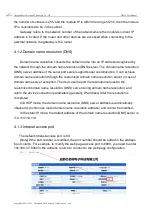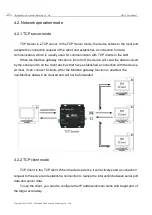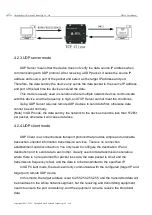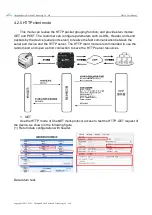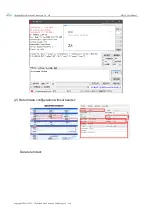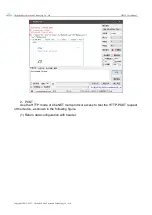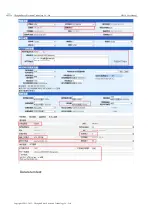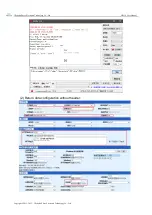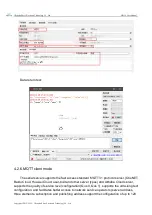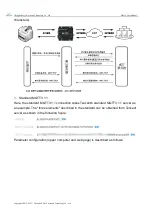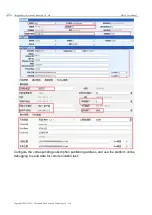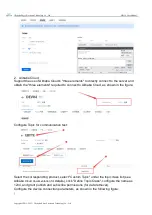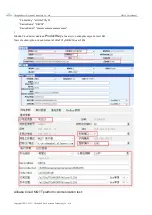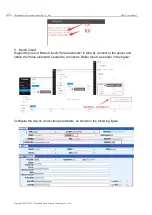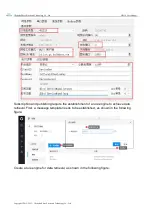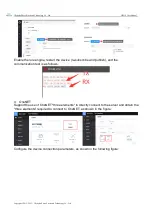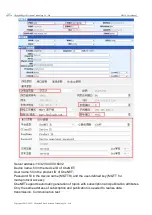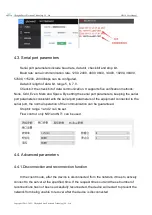
Chengdu Ebyte Electronic Technology Co., Ltd.
NB114 User Manual
Copyright ©2012–2023
,
Chengdu Ebyte Electronic Technology Co., Ltd.
4.2.3.UDP server mode
UDP Server means that the device does not verify the data source IP address when
communicating with UDP protocol. After receiving a UDP packet, it saves the source IP
address and source port of the packet and sets it as the target IP address and port.
Therefore, the data sent by the device only sends the data packet to the source IP address
and port of the last time the device received the data.
This mode is usually used in scenarios where multiple network devices communicate
with this device, and the frequency is high, and TCP Server cannot meet the conditions.
Using UDP Server requires remote UDP devices to send data first, otherwise data
cannot be sent normally.
[Note] In UDP mode, the data sent by the network to the device should be less than 512Bit
per packet, otherwise it will cause data loss.
4.2.4.UDP client mode
UDP Client is a connectionless transport protocol that provides simple and unreliable
transaction-oriented information transmission services. There is no connection
establishment and disconnection. You only need to configure the destination IP and
destination port to send data to each other. Usually used in data transmission scenarios
where there is no requirement for packet loss rate, the data packet is small and the
transmission frequency is fast, and the data is to be transmitted to the specified IP.
In UDP Client mode, the device will only communicate with the configured (target IP and
target port) remote UDP device.
In this mode, the target address is set to 255.255.255.255, and the transmitted data will
be broadcast in the whole network segment, but the receiving and transmitting equipment
needs to ensure the port consistency, and the equipment can also receive the broadcast
data.

